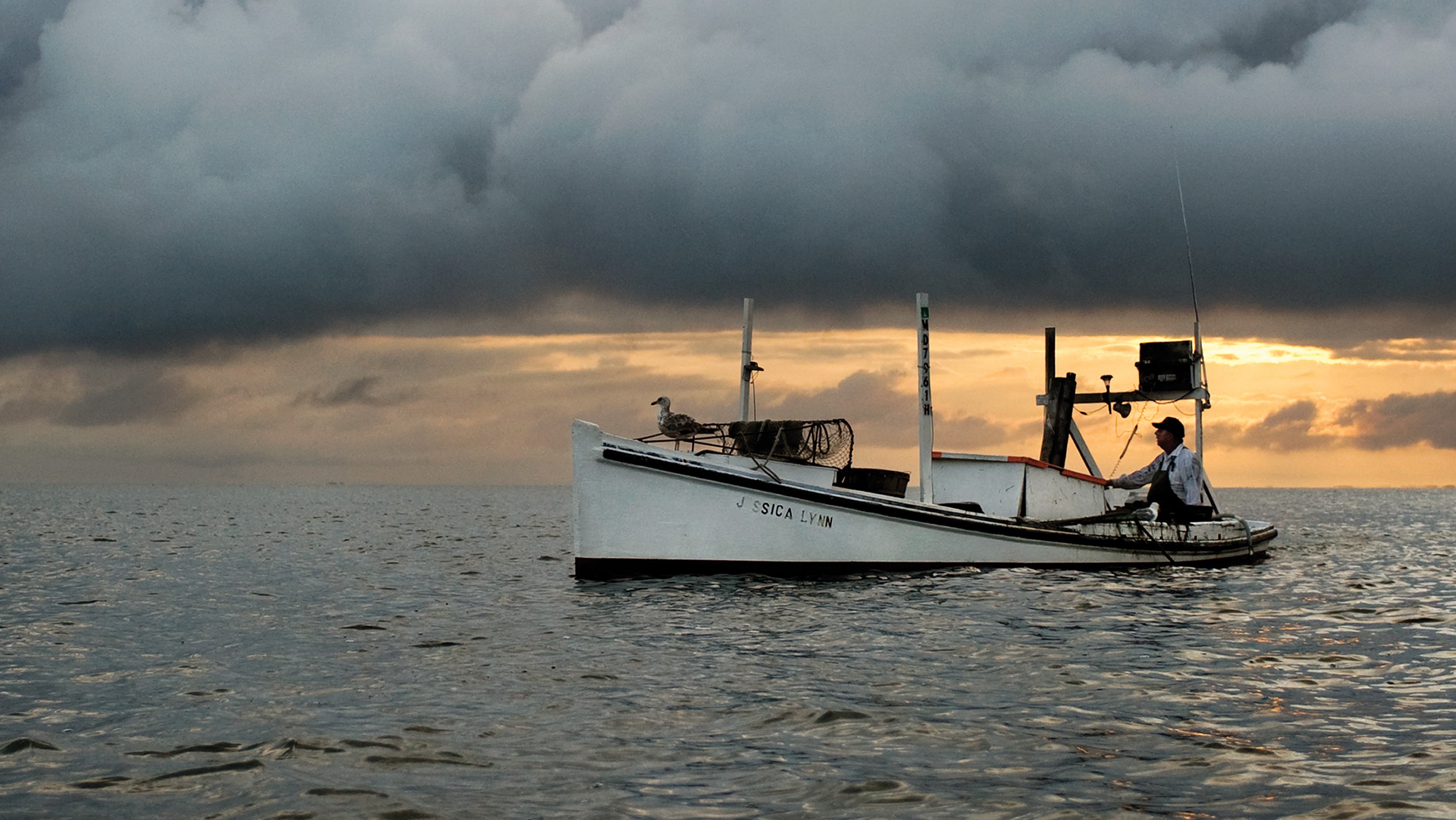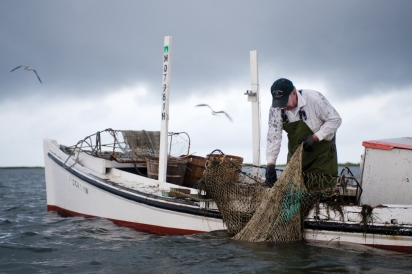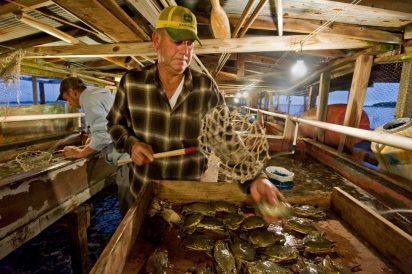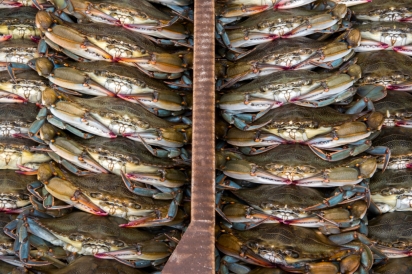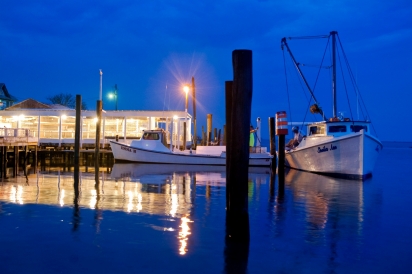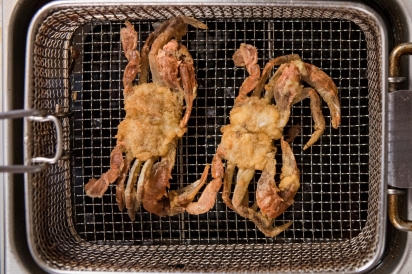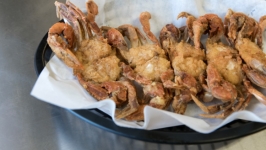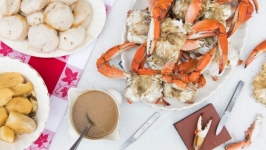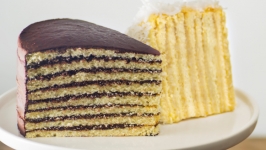Soft Shell Crabs the Smith Island Way
Throughout the summer, the shallow grass beds surrounding the marshy archipelago of Smith Island become inundated with Blue Crabs. These crabs crawl by the thousands into the grass beds to shed, a process scientifically referred to as ecdysis. Blue Crabs shed their hard exoskeletons 20-23 times throughout their short life in order to grow. Just after shedding, the crabs are soft to the touch, and very vulnerable to predation. The grasses provide the ideal protection from predators like fish, turtles, birds and even other crabs, (yes, crabs are cannibalistic!) Within six to eight hours after shedding, the new exoskeleton will harden and the crabs will regain their protective shell.
Watermen on Smith Island have mastered the biology and the habitat of the crabs to supply markets around the country with a true Chesapeake Bay delicacy - soft shell crabs. The island’s crabbers target peeler and soft shell crabs in the shallow grass beds using a crab scrape towed behind a shallow draft workboat, known as a ‘barcat’. As the scrape is pulled through the grass beds, crabs collect in the mesh bag. The watermen will then pull the scrape in by hand and unload the haul onto the boat. The peeler crabs are individually examined and separated into different baskets based on how close each one is to shedding. Soft crabs are kept alive by placing them gently into the boat’s live well with recirculating water from the bay. This process is repeated from sunrise to just after noon. Upon returning to the island and their crab houses, called ‘shanties’ on the island, the watermen will put the peeler crabs into ‘floats’ with recirculating water where they will ultimately go through the shedding process.
A day’s work does not end after the crabs are put into the floats – shedding crabs is a 24-7 job for the Smith Island watermen and their families who help tend to the shanties. Every four to six hours the soft shells have to be ‘fished-up’ - island slang for taking the soft shells out of the water. Once the crabs are out of the water, they will stop hardening. The live soft crabs are packed neatly into waxed cardboard boxes, kept moist with dampened newspaper and stored in a cool environment. Properly packed crabs will stay alive for up to a week. The cardboard boxes are picked up in the early morning hours by the island’s ferry captains and taken across the Tangier Sound to seafood distributors in Crisfield - the self-proclaimed ‘Crab Capital of the World.’ There, distributors process the live soft shell crabs to be sent throughout the country.
For the watermen and their families on Smith Island, soft crabs represent a good portion of the summer’s income. Even though the majority are sold to markets in Crisfield, some crabs are kept for local eating. Smith Islanders have a unique way of preparing the crabs, which are abundant at a low cost during the season.


